Civil War Submarine
Civil war submarines sound way out of place, don't they?
I mean, subs are a 20th century thing, right?
Well, as it turns out, not really...
In fact, submarines have a very long and somewhat interesting history.
In 1623, Cornelius Drebbel - working for King James I of England - oversaw the building of what is believed to have been the first working submarine. According to accounts from that time period it appeared to be a large enclosed rowboat using twelve oarsmen for propulsion. It is said to have made a trip down the Thames River submerged at a depth of about 15 feet. Some accounts go so far as to claim that James I took a ride in Drebbel's submarine. Historians however, view such claims rather doubtfully.
Over the next 150 years or so several people made various submarines for various purposes. These were tested with differing levels of success...
In the mid 1600s the "Rotterdam Boat" was built by the Netherlands to be used against the British, but failed because its propulsion system, a spring-driven clock-work mechanism, was far too weak to power the boat.
In the last half of the 1700s John Day successfully built a small sub he used to submerge in shallow water. However, he then upped the ante. Literally! He and a gambler started taking bets on how long he could stay submerged in the middle of Plymouth Sound. It is believed that his sub collapsed under the greater pressure in the much deeper water. Day thus became the first recorded "death by submarine."
Finally, in 1776, during the American Revolution, a submarine was used to attack an enemy ship. The Turtle (left), as the sub was called, was built by David Bushnell and piloted by Ezra Lee of the Continental Army. Lee piloted the Turtle under the British flagship HMS Eagle and attempted to attach a large explosive charge to the bottom of the ship. However, he was unable to successfully attach the explosives to the ship and was forced to give up. George Washington personally congratulated Lee on his survival and later gave him employment on secret service.
There were many more experiments and developments over the next 80 plus years, but when the American Civil War came along submarine development got kicked up a notch...
Civil War Sub Development
Today it is known that a lot of work was done on developing and deploying submarines on both sides of the Civil War. There is very little information available concerning these Civil War submarines to be found in official record. Why? To hide new developments from the enemy?
Well, partly...
But the main reason is much more entertaining. Submarines were considered practically illegal...
Therefore, most submarine development carried on in the Confederacy was done under the direction of the Secret Service rather than under the direction of the Navy. As the war was coming to a close most records of southern submarine development were destroyed to protect those that had taken part. It was feared that anyone involved in the development of "Infernal Machines," as northerners were so fond of calling subs, would face harsher treatment than the average Confederate rebel.
This makes the Union's involvement in submarine development all the more entertaining. While publicly decrying undersea warfare, the U.S. Navy maintained its own submarine development and building program. For consistency, the Official Record from this time shows almost no involvement in such a program, and when a mention does appear it is accompanied by repeated calls for secrecy on the matter.
For these reasons, most of what we know about Civil War submarines does not come from official government records on the matter.
We do know, however, that the overall goal on the two sides was somewhat different. Most Union submarine development was done with the goal of clearing obstructed harbors, while most Confederate submarine development was done with the goal of breaking up the Union blockade.
The most well known Union submarine was the USS Alligator (right). The Alligator was designed by a French inventor named Brutus de Villeroi. While under tow on the way to Charleston, South Carolina, this sub was lost in a storm. Interesting fact: in the 1860 census Villeroi listed his occupation as "natural genius." I believe his self esteem was well intact...
There were several other Union subs developed, of which little is known. Although, at one point USN Admiral Dahlgren asked for the services of "3-4 submarines" to help clear Charleston Harbor of obstructions. This means the Admiral was either out of his mind, or the Union had several harbor clearing subs at their disposal. While there is no officially recorded response to this request, shortly thereafter, Confederates reported sighting a sub being towed into Charleston harbor and sliding beneath the surface.
A couple other northern subs that deserve mention, even though they did not see service in the civil war, are the Intelligent Whale and the Explorer. There is not room here for their stories but perhaps we will get to them later.
Meanwhile, in the south there were many efforts underway to build a sub to break up the Union blockade. First, there were "David" boats: long, narrow steamboats which ran awash with snorkel type smoke stacks and air intakes. These boats were largely ineffectual and not truly submarines.
As early as 1861 there were reports of experimental subs being tested in the harbors at New Orleans, Mobile, and Savannah. There were many different subs developed in the Confederacy, but the work of William Cheeney and Horace Hunley is most well known...
Cheeney worked in Richmond and had his subs attempting attacks as early as 1861. He continued to work on producing improved subs throughout the Civil War...
Hunley worked mainly in Mobile, Alabama, where he and his team built the Pioneer, Pioneer II, and Hunley. It is believed that they may have built and tested other subs as well. Interestingly, the Pioneer was the first submarine to be granted a letter of marque by the Confederate government. This basically allowed its private owners to legally attack enemy ships.
Overall, there is enough information available for historians to surmise that there must have been more than 20 submarines, from both sides, developed throughout the American Civil War...
Civil War Submarine Attacks
As we said above, the Confederacy was in dire need of breaking up the Union blockade. For this reason, Civil War submarine attacking was pretty much a strictly southern pastime. Here we will look at two Confederate sub attacks before we get the story of the famous Hunley...
In the summer of 1861 Cheeney's first submarine was tested in the James River at Richmond. Here it successfully sank its target boat (an old barge). Reports of this test reached the north and caused much concern. The US navy began to develop anti-submarine measures right away. At first all they had was weighted nets and chains hanging around the ships in an effort to keep any sub from getting close enough to attach explosives to destroy the ship...
In October of 1861 that primitive defense saved the USS Minnesota from being sunk. As Cheeney's sub approached to attach explosives to the Minnesota, it got tangled in the defensive netting and its crew was barely able to get free and escape with their lives. That was the end of the first submarine attack of the Civil War.
The other story we will tell here is very mysterious... While the story, in my opinion, is most likely not true, it is an interesting story nonetheless. On August, 5, 1864, the Battle of Mobile Bay (left) took place. During the battle, the USS Tecumseh veered out of line and into a known mine field. There the Tecumseh paid the price for its wayward behavior. It sank immediately with the loss of all but a few hands. Interestingly, Union Admiral Farragut soon turned the entire fleet into the minefield without damage. Despite the fact that crewmen aboard the Union ships reported hearing ignition charges go off as their ships hit mines, the powder was too waterlogged to explode. Which left the Union fleet with a safe passage into the bay.
Now here is the interesting part... According to this story, after the Tecumseh went down, three Confederate sailors were pulled out of the water. One of these men was Captain Albert Pierce. Captain Pierce told his captors that his submarine, the CSS Captain Pierce, had attached explosives to an unknown Yankee ship. While making good their escape, the boiler on their sub exploded. This, of course, sank the sub and killed most of his men. Captain Pierce thought he was picked up by the ship he had targeted and that his explosives must not have worked. However, it is possible that he actually made the second successful submarine attack in history with the Tecumseh as his victim. To further thicken the plot, it is reported that an unknown sunken vessel lies buried in the sand almost directly below the wreck of the Tecumseh. Could it be the Captain Pierce? Possibly...
I find this story doubtful for two reasons. First, as near as I can tell (which doesn't mean much, and feel free to correct me if I am wrong) this story was not widely published until well into the 1900s, with no mention that I know of in the accounts of the Battle of Mobile Bay. Second, this is the clincher for me, why in the world would any sane captain be running his sub around in the middle of a known minefield?
Now, lets get down to the main event...
CSS Hunley
Horace Hunley's last sub was the most famous Civil War submarine. He and his partners had the Hunley ready for testing by July of 1863. The sub tested successfully in Mobile Bay by sinking a coal flatboat. After the successful test the Hunley was transported by train to Charleston, South Carolina, to be used against the union blockade there.
Upon arrival in Charleston, the Hunley was tested again. This time the volunteer skipper, Lieutenant John A. Payne, accidentally stepped on the dive lever while the sub was running with hatches open. This caused the sub to flood and sink immediately. Payne and two crewmen were able to escape, but the other five crew members were drowned.
The Hunley was salvaged and another test run arranged. This time, the inventor Mr. Hunley would be going along. It is believed that during a mock attack the skipper failed to pull out of a dive and the Hunley drove bow first into the sea floor and became stuck. Due to the water pressure that far below the surface, the crew was not able to open the hatches and escape the doomed vessel. Mr. Hunley and the entire crew perished.
Finally, on February, 17, 1864, the Hunley took its first action against the enemy. Lieutenant George E. Dixon and his crew slipped out and found the USS Housatonic. They then submerged and rammed the Housatonic with a spar torpedo protruding from the front of the sub. As they backed away from the enemy the torpedo was left stuck in the side of the Housatonic. Once they had gotten a safe distance away, the torpedo charge was tripped and the the Housatonic was sunk within five minutes. Thus, Lieutenant Dixon and his crew became the first to ever sink an enemy ship using a submarine, and the Hunley secured its place in history. This would not be done again until World War I.
However, the story does not end there...
Roughly an hour after the torpedo had detonated, the Hunley surfaced and showed a "blue light" signal (not lantern lights, but rather some sort of pyrotechnic signal). This was the agreed upon signal to indicate that they had survived the attack and were returning to base. The signal was seen by the commander of one of the Confederate batteries in the harbor as well as by a lookout from the Housatonic who saw a "blue light" on the water after his ship had sunk.
Unfortunately, the Hunley was never heard from again...
In 1970, underwater archaeologist E. Lee Spence located the wreck of the Hunley and he donated the find to the state of South Carolina in 1995. In 2000 the sub was raised, and a long restoration was begun.
Below is a cool video from National Geographic giving just a peek into how the Hunley worked...

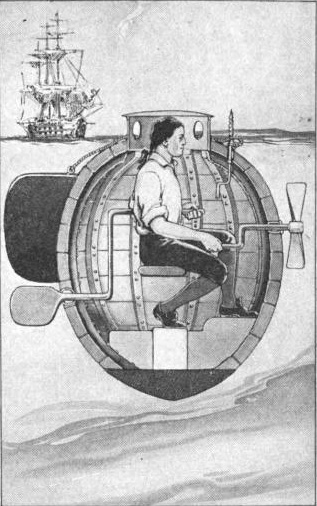
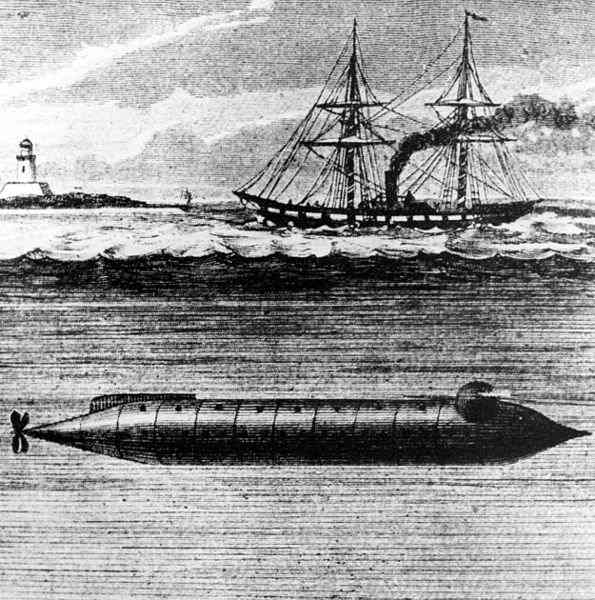
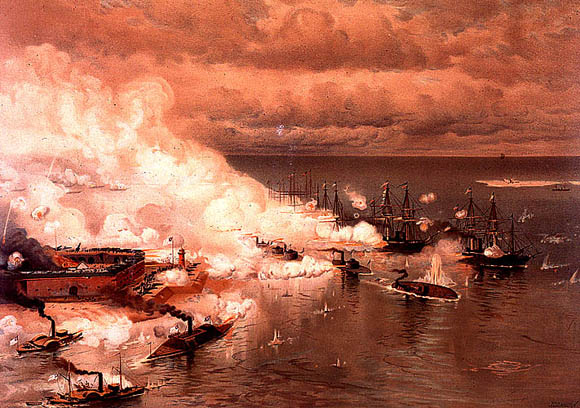

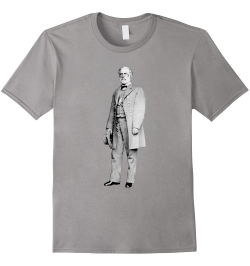


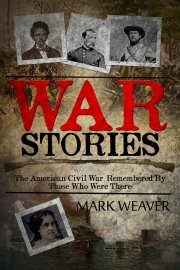

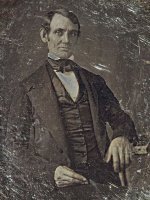
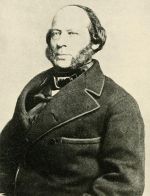
New! Comments
Have your say about what you just read! Leave me a comment in the box below.